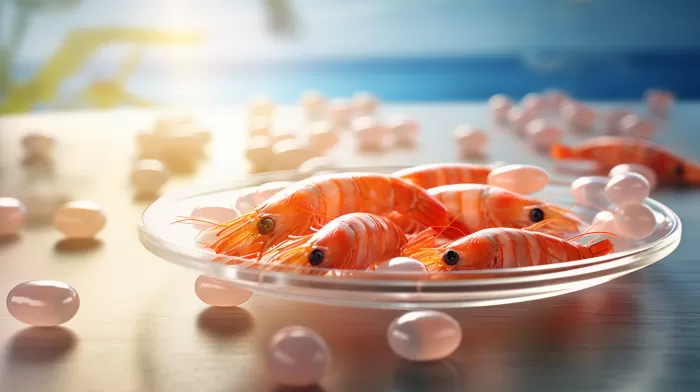Each year, Americans consume about four pounds of shrimp. That seems harmless enough, right? Well, recent research from Arizona State University suggests that those shrimp may contain some alarming chemicals. We’re talking about antibiotic residues in the wild-caught shrimp imported from Mexico.
There are a couple of major concerns surrounding this finding. First, there’s the potential for consumers to experience allergic reactions to the contaminants. But perhaps an even larger issue is the potential increase in antibiotic-resistant bacteria. As more and more people are exposed to these antibiotics, the risk of infectious pathogens developing resistance to them only grows.
The Antibiotic Problem
Researchers at Arizona State University’s Biodesign Institute Center for Environmental Security examined a study involving 27 samples of seafood, including popular options like shrimp, tilapia, catfish, swai (a type of catfish), and Atlantic salmon. The samples were all obtained from local Arizona supermarkets.
The findings? Measurable amounts of five different antibiotics were discovered. Oxytetracycline was found in the wild shrimp as well as in farmed tilapia, farmed salmon, and farmed trout. Farmed salmon contained two other antibiotics, 4-epioxytetracycline and ormetoprim. Additionally, farmed shrimp was found to contain sulfadimethoxine.
Perhaps the most concerning result was that even farmed salmon that had been labeled as antibiotic-free still contained the antibiotic virginiamycin.
Wild Shrimp: Mislabeling and Contamination
Though the study only focused on wild shrimp imported from Mexico, the presence of antibiotic residues is still concerning. Researchers aren’t entirely sure why the wild shrimp contained antibiotics, but they have a few theories. The shrimp could have been mislabeled, or it could have picked up residue from sewage pollution or contamination during processing and handling.
While more research is needed to determine the exact cause, this problem highlights the need for better oversight and regulation in the seafood industry.
The Dangers of Antibiotic Resistance
As the use of antibiotics in animal husbandry and aquaculture continues unchecked, we’re treading dangerous waters. This isn’t just about the risk of allergic reactions or potential contamination. It’s about the looming threat of antibiotic resistance.
As pathogens are exposed to low levels of antibiotics over time, they can develop resistance to the drugs, making them harder to treat when they infect humans. This raises serious concerns for public health, and experts like researcher Rolf Halden, who directs Arizona University’s Biodesign Institute Center for Environmental Security, warn that we must revise our current practices if we’re to avoid the threat of living in a post-antibiotic era.
Additionally, this study underscores the need for better regulation in the seafood industry. It shouldn’t be possible for antibiotic-containing products to make it onto supermarket shelves, or for labels to be misleading.
What Can We Do?
While efforts to improve practices in the animal husbandry and aquaculture industries may take time, there are still steps we can take as consumers to protect ourselves and our families. Here are some tips to keep in mind when shopping for seafood:
- Look for reputable sources of seafood: Purchase your shrimp and other seafood from reputable suppliers to ensure you’re getting the best possible product. This can help reduce the risk of antibiotic contamination and exposure.
-
Get informed about labeling and certification practices: Familiarize yourself with common labels and certifications associated with seafood, such as “sustainably sourced” or “organic.” Look for independent certifications, like those provided by the Marine Stewardship Council (MSC), and avoid products with vague or unsubstantiated claims.
-
Opt for domestic seafood when possible: While imported seafood may be cheaper, it comes with a higher risk of contamination. When possible, choose domestic or locally caught and farmed seafood to reduce the risk of antibiotic residues.
-
Practice proper food safety: As always, practicing good hygiene and food safety techniques in the kitchen can help reduce the risk of foodborne illness and contamination from any source, including antibiotics.
By remaining vigilant and informed, we can help protect ourselves and our families from the risk of antibiotic-contaminated seafood and the potentially disastrous consequences of antibiotic resistance.



